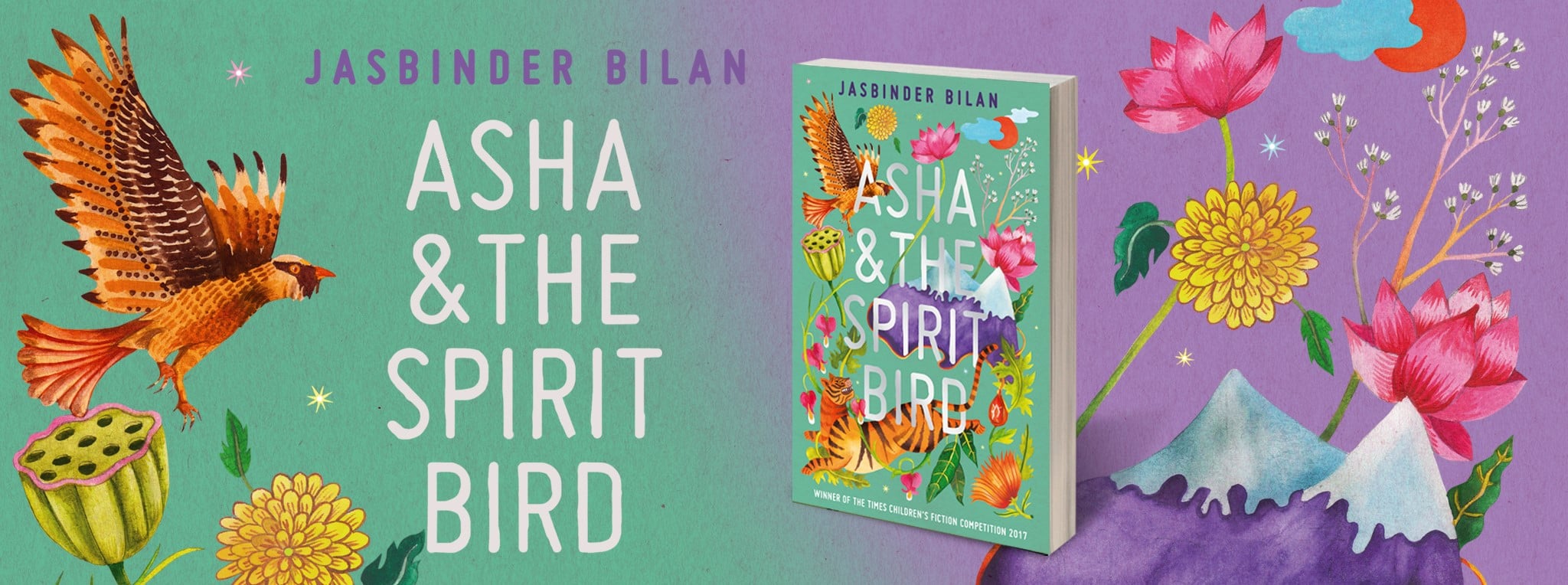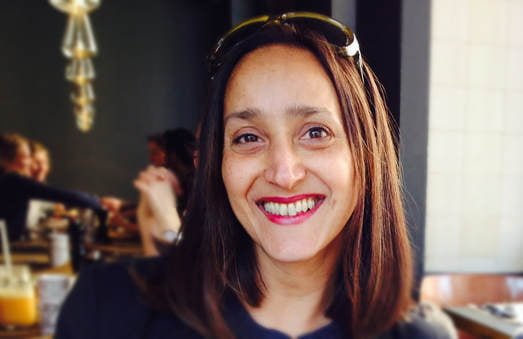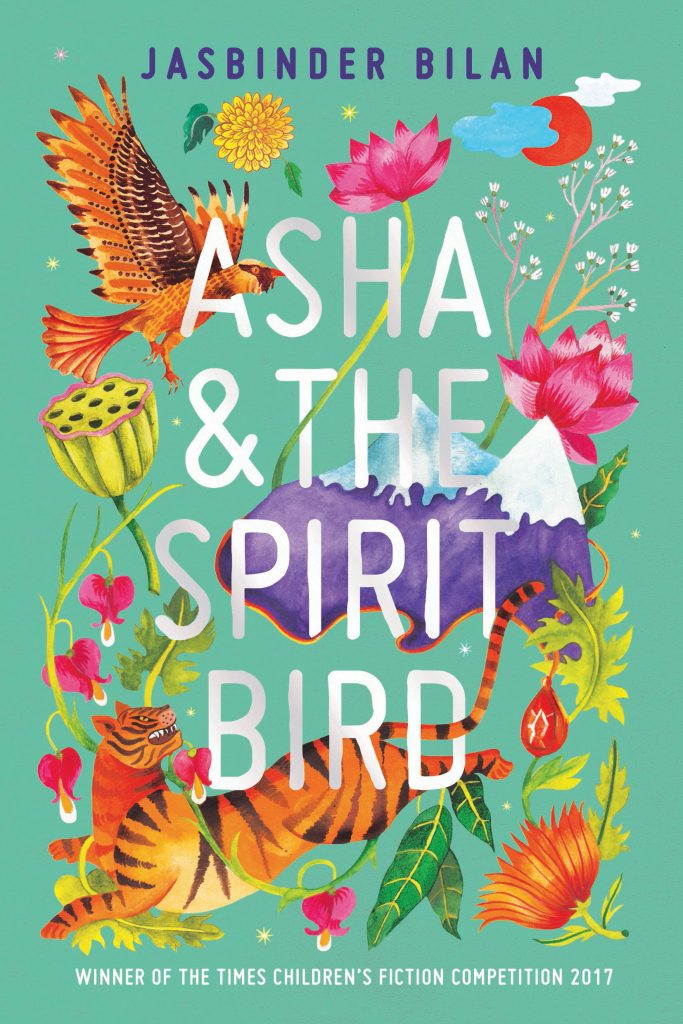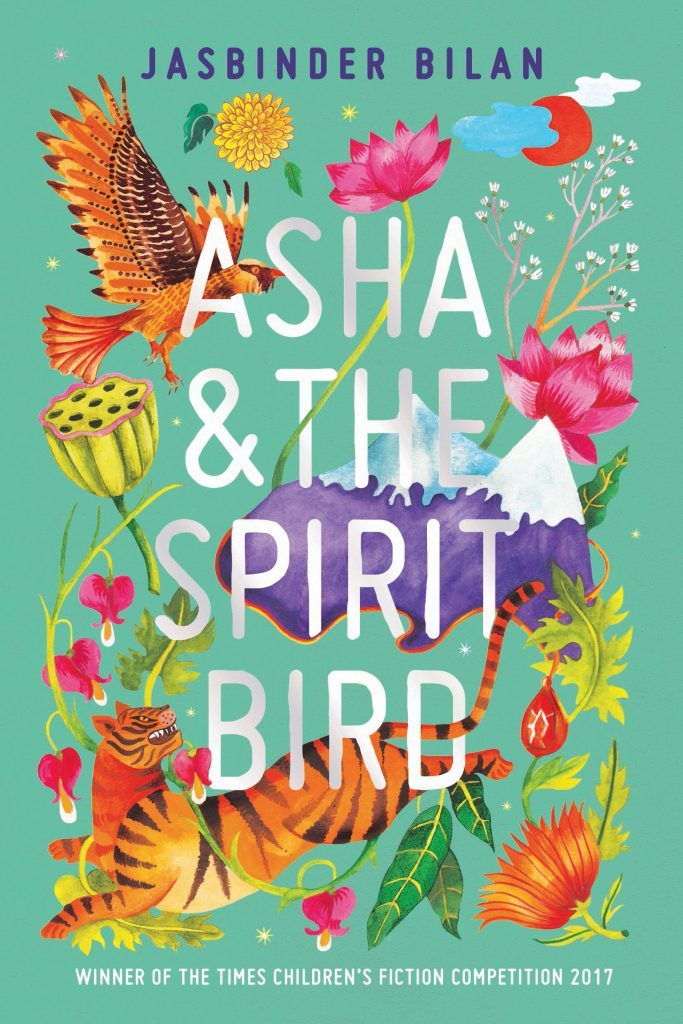Jasbinder Bilan is the author of Asha And The Spirit Bird, an evocative, beautiful magical-realist Indian adventure and the winner of the 2017 Times/Chicken House Children’s Fiction Competition.
Asha And The Spirit Bird was the winner of the 2017 Times/Chicken House Children’s Fiction Competition. What has the process been like since you won the competition?

Chickenhouse are a very editorially minded publisher and they always want your book to be the best it can be. So one of the first things they did, following on from the competition, was to make a few suggestions. One of these was to change the title of the book from Song Of The Mountain, to Asha And The Spirit Bird. Although I always loved the evocative tone of my original, I think its current title, incorporating Asha’s name and the all important spirit bird, creates a very strong image.
I wonder if you could introduce us to Asha and Jeevan, the two main characters in Asha and the Spirit Bird, and tell us a bit more about them and who they were inspired by?
When I first thought about writing my story, I immediately got a very clear image in my head of a little girl, perhaps my grandmother, on a farm in the mountains of India. She was playing in the earth with water, which she was pouring from a shiny brass jug. From here I began thinking about Asha and building her character around this strong picture. I knew I wanted her to stand out from the crowd, so I gave her striking green eyes. She is also born around Divali in a thunderstorm which gives her a special sixth sense.
Asha’s best friend is twelve year old Jeevan. He is the opposite of Asha. He is very scientific and doesn’t believe in the spirits of our ancestors taking on animal form – at least not in the beginning! But he is a very good friend to Asha. He is kind and gentle and would do anything for her – even trek through the wild Himalayas!
Asha and Jeevan are very different. Jeevan is very dismissive for a long time of Asha’s beliefs in dreams, spirits and ancestral guides. What do you think they each bring to their relationship?
There is a saying that opposites attract and Asha and Jeevan are very different. It is partly this difference which means they do so well together. When one of them falters or feels upset, the other one pushes forward and comes to their rescue. They have a very equal friendship and support each other though thick and thin.
Who are you more like: Asha or Jeevan?
I think I am definitely more like Asha! But I based Jeevan a little on both of my sons who are very kind and loyal.

What struck me throughout the story is the sheer independence and courage displayed by the children – they never rely on the adults to save them! Their decisions propel the story forward and provide many of the twists and surprises. Could you talk about this a bit more?
I really wanted this story to be about the importance of family and friendship. It was crucial that Asha and Jeevan used their own resources when they were pushed into difficult situations created by adults. I think children have a very strong sense of justice and fairness and it is incredible what they can achieve when they put their mind to it.
“I wanted children reading my book to feel empowered, to feel they can overcome difficulties, stay strong and believe in themselves.”
Another relationship that’s pivotal to the story is the relationship between Asha and her beloved Nanijee. How much of their relationship has been influenced by your own relationship with your grandmother?
My relationship with my majee, my grandmother, was the central inspiration for Asha And The Spirit Bird. She was a very strong figure in my life and she gave me my love for stories as well as faith in reincarnation. I found it incredibly comforting to think that when she died she would never really leave me. While I was writing the story I felt that she stayed by me, encouraging me through the ups and downs of the writing journey, telling me not to give up when it got hard.
Why did you decide to portray Asha’s spirit bird as a lamagaia? Why not a falcon or eagle?

I did a lot of research for Asha And The Spirit Bird. I used diaries I kept when I visited India for the first time as an adult, as well as watching lots of BBC documentaries set in the Himalayas. The lamagaia is a bird of prey which caught my imagination, with its huge wingspan of up to three metres. It is also a little less known than an eagle or falcon, so I felt children reading the book would also learn something, which they may not have known before.
One scene that is very powerful is when Asha hacks off her plait. Why is this such an important moment in the story and so striking in the context of the setting and culture? What might Asha be thinking and feeling at this point?
This moment is very poignant. Asha is afraid that someone will recognise her, so she makes a very bold decision to cut off her plait. In traditional Indian culture, hair plays a very special role. She would have bonded with her ma through the special times of combing and plaiting it. Equally, to sacrifice your hair is an action of honour. In my original version, Asha goes to a barber’s stall to have it shaved off, but I think it is more powerful that she does it in a horrible setting and hacks it to show her desperation and determination. Carrying her plait with her to release into the Ganges at its point of birth high in the Himalayas, is something that keeps her strong.
Some of the scenes set in the junkyard are quite difficult to read – it’s a very harsh, unforgiving world for the young orphans who find themselves kidnapped and sold into this trade. Were these chapters difficult to write? Why did you decide to include them in the story?
There are very distressing things that happen to vulnerable children the world over. Once Asha and Jeevan arrive in the city, they are full of hope that they will find her papa and return home really quickly. I don’t think children shy away from these realities and although it was difficult to put Asha and Jeevan in the junkyard and it genuinely brought a tear when Asha sees Jeevan for the first time, this is when Asha’s power and strength rises. It is the climax of the magic, her nanijee and her self-belief.
The front cover design is stunning! Can you remember how you felt when you saw it for the first time?

I first saw the cover design as a pencil-drawn first draft. I was totally honoured to have the artist, Aitch, who also created Frances Hardinge’s cover for A Skinful Of Shadows, which I loved, do mine too. When I saw the painted version with all the colours, the lamagaia and the tiger, I was absolutely in love with it. It felt so special and more than I could ever have wished for. And such a perfect vibe for my story.
How much of this book did you have to research and how much of it is based on your own childhood memories of growing up in Northern Punjab?
It is a real mixture of fact and fiction. The backdrop to the story is rooted in the very real setting of my childhood and based around the stories my majee and uncles told when I was growing up on our family farm in Punjab. I took this seed and layered it with my imagination. I asked myself lots of what if questions…what if my family hadn’t moved to the UK, what if things got tough and what if our ancestors stay with us in times of need?
The story has been described as having elements of magical realism. Can you tell us a little bit more about what magical realism is?
“Magical realism is when you have a very real story in an every day setting and from this ordinary setting there emerges something extraordinary and magical that can’t be explained.”
I love this genre because it means that ordinary children with their normal lives can believe in the power of magic. When things are tough, it can be beautiful and uplifting to go into your imagination and believe that you are special, which I think all children are.
The language in the story is beautiful. You describe, for example, weeks zooming by ‘as fast as a flickering sunbird’s wing’ and snow falling ‘as if someone’s shaking a feather pillow in the air’. Do these striking images come to you naturally or do you have to spend a lot of time working on your sentence construction?
Once I have written the bones of my story, I like to make it as evocative as I can. I am naturally quite imaginative with my descriptions and aim to paint a vivid image with my words. I also like to give my descriptions space to breath, so I try to have a couple of striking sentences per page and let them shine.
Do you think Asha and Jeevan will return in another adventure or are you happy with where you’ve left them?
Lots of people have asked me this. At the moment I don’t have any plans to return to Asha and Jeevan, but I genuinely loved being in The Himalayas, so perhaps if I were asked to create another adventure for them, it would be fun to write.
Finally, can you describe Asha And The Spirit Bird in three words?
Magical, Indian, Adventure


